Delve into the fascinating legacy of King Seti I: from his family lineage and titles to ruling era, achievements, constructions, temple, tomb, mummy, cartouche, Moses connection, and historical facts.

| Overview | |
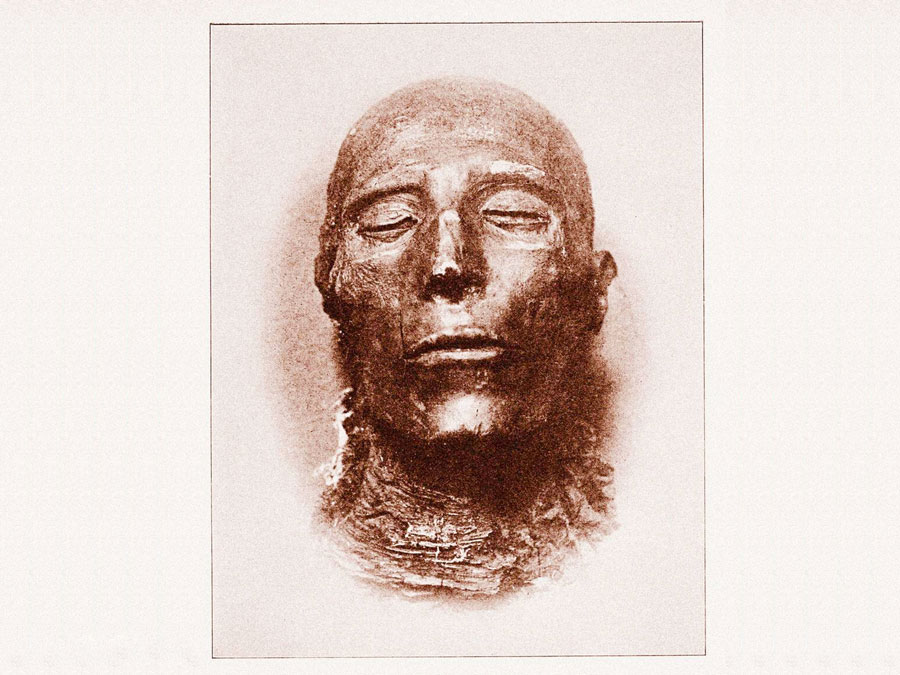
|
|
| Reign | 1294/1290–1279 BC |
| Predecessor | Ramesses I |
| Successor | Ramesses II |
| Consort | Tuya, Tanedjemet |
| Children | Tia, Ramesses II, Henutmire |
Seti I was one of the most influential ancient Egyptian rulers of the 19th dynasty, tasked with the powerful mission of restoring the greatness of Egypt after the upheaval left by Akhenaten. He led a new wave of dominance and creativity through the entire country, which can be seen across his great monuments, which include the ethereal Abydos Temple.
Seti I's reign was a magical time period of absolute prosperity and stability for ancient Egypt. His military achievements and dedication to temple construction left a lasting legacy that was truly blessed by the ancient Egyptian gods, showcasing the might and grandeur of the Egyptian empire during the New Kingdom period of ancient Egypt.

His main consort or wife was Tuya, who was the daughter of a charioteer military officer in his own army known as Raia. He has three children, a son and two daughters, with his wife, Tia, Ramesses II, and Henutmire. His daughter Tia married a very high-ranking civil servant who also was named Tia. His son Ramses II succeeded his father and married his younger sister Henutmire.
His son Ramesses II may have served as his co-regent. Not a great deal of information is known because the pharaoh had this bad habit of frequently changing the dates of previous reigns in order to remove the unpopular pharaohs from history.

Menmaatre Seti I, also known as Sethos I, ruled Egypt during the New Kingdom period from around 1294 or 1290 BCE to 1279 BCE as the second pharaoh of the Nineteenth Dynasty. He was the son of Ramesses I and Sitre, and his reign followed that of his father. Seti I's name 'Seti' stems from being dedicated to the god Set, also known as "Sutekh" or "Seth", aligning with the common practice among pharaohs to have connections to various gods and multiple names throughout their reigns. Seti I bore multiple names customary for pharaohs as he was known as "The man of Seth and Beloved of Ptah". His prenomen, "Menmaatre", signifies "Established is the Justice of Re" while his nomen, "Sety Merenptah", translates to "Man of Set, beloved of Ptah".
The history of ancient Egyptian pharaohs started in 3400 B.C until 335 B.C. There are 30 Dynasties ruled Egypt throughout the four kingdoms.
Read MoreHe had the title of Nebty name Wehemmesut-Sekhemkhepesh Derpedjut who had the title of "Renewing Births, the strong-armed one who has Repelled the Nine Bows", Horus name “Kanakhte-Khaemwaset Seankhtawy” which means "Strong Bull, Who Appears in Thebes and Sustains the Two Lands", and a golden Horus title Wehemkhau-Userpedjutem-Tawnebu which means "Powerful of Effectiveness, who has Subdued his Enemies". Despite Manetho's erroneous claim that he founded the 19th Dynasty and reigned for 55 years, there's no evidence supporting such an extended rule.

After Akhenaten's religious reforms caused significant social disruptions, subsequent pharaohs like Horemheb, Ramesses I, and Seti I aimed to restore stability in Egypt. Seti I, driven and resolute, prioritized reclaiming control over territories in Canaan and Syria, which had faced external pressures from the Hittite state. Despite not eliminating the Hittite threat entirely, Seti I engaged in multiple battles, reclaiming much of the disputed land for Egypt and often concluding these campaigns with victories. Seti I's military triumphs were commemorated in grand scenes at the Amun temple in the Karnak temple complex.
He was honored with a funerary temple at Qurna (Mortuary Temple of Seti I) and initiated the construction of a splendid limestone temple at Abydos, later finished by his son. His capital was situated in Memphis city. Though esteemed by his contemporaries as a great ruler, his legacy has been somewhat overshadowed by the fame of his son, Ramesses II. Records of Seti I's reign suggest a span of either 11 or 15 years; a complete absence of records for his final four years is improbable given his otherwise well-documented history.
The possibility remains that undiscovered records could shed light on this period. Seti I led extensive military battles in ancient Egypt during his early reign across Western Asia, Libya, and Nubia. Depicted in grand detail on the north wall of Karnak's Hypostyle Hall, these battles covered regions like Canaan, where he received tribute from some city-states and conquered others, such as Beth-Shan and Yenoam. he engaged in conflicts with the Shasu Bedouins in the Sinai and faced off against Asian nomads, possibly identified as the Hebrews.
Seti I's forces subdued Libyan tribes threatening Egypt's western border and quelled a minor Nubian rebellion, potentially led by his future successor, Ramesses II. His most renowned conquest was reclaiming Kadesh and Amurru from the Hittite Empire, an achievement not held since Akhenaten's era. Although victorious initially, Egypt couldn't maintain a lasting hold on Kadesh due to its proximity to Hittite territory. Recent scholarship suggests that while certain regions were lost during Akhenaten's time, Seti I primarily restored control over these territories rather than rebuilding an entirely collapsed empire. His legacy prominently features detailed war monuments and texts glorifying his military prowess, emphasizing his achievements on the battlefield.
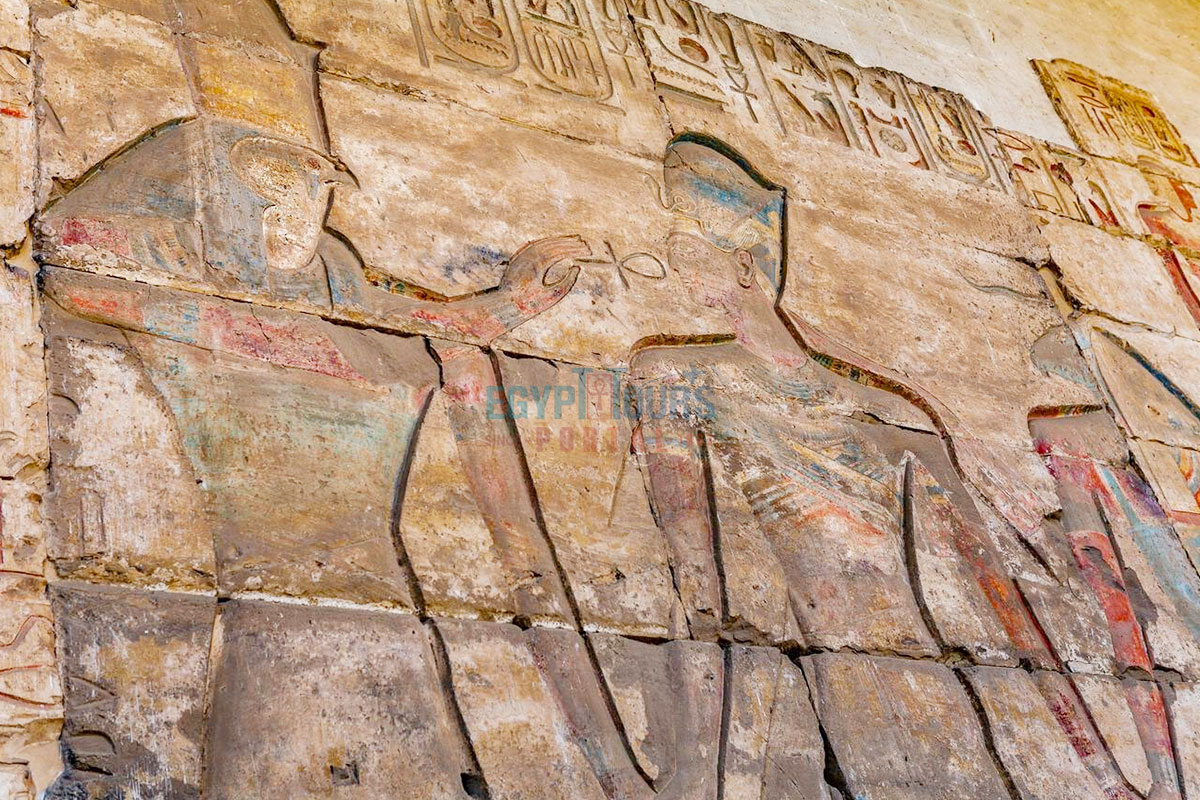
Seti I's reign was a time of prosperity; he was a great builder as he constructed many incredible monuments and was able to greatly expand the lands of ancient Egypt. He was able to restore Egypt's lost prestige, which had been lost in the troubled last days of the 18th dynasty.
Seti I led a great army of 60,000 men and fought many battles in the north of Palestine and Syria. He fought the Hittite army led by King Muwatallis. King Ramses II was able to finish his father's work by beating the Hittite army in the battle of Kadesh and creating the first documented peace treaty in history.
Uncover the history behind famous ancient Egyptian battles and wars. Learn more about these historic conflicts today.
Read MoreHe opened many new quarries for stone and precious metals that could be turned into majestic statues and obelisks. He dug many wells and rebuilt many shrines and temples. King Seti I continued the construction of the magical hypostyle hall at Karnak, which was started by his father, Ramses I. He constructed a number of ancient Egyptian temples, such as the enchanting temple of Seti at Abydos, which honors many gods like Osiris, Horus, Isis, Amen-Re, Ptah, and Re-Harakhte.
There are a lot of other temples, like the mortuary temple at Qurna in Thebes, the temple of Elephantine, the desert temple at northern Edfu, and the temple of Buhen. All of these temples were dedicated to the gods and to the pharaohs to indicate the close connection between the public, the pharaohs, and the gods.

The tomb of Seti I is located in the Valley of the Kings, which was named "The Tomb of Apis", "The Tomb of Psammis, son of Nechois", and "Belzoni's Tomb". The tomb was discovered in 1817 by Giovanni Battista Belzoni. The tomb was 136 m (446 ft). There is a descending flight of steps that leads to the entrance to the tomb and then leads to a corridor and a second stairway.
Behind the second corridor is a rectangular shaft leading into an 8 m wide room containing four large pillars attached to a second hall. There is a complex hall containing six pillars and two chapels. The burial chamber is incredible as the ceilings are decorated with constellations, and the walls are engraved with passages from the Book of the Gates and Amduat.
There is an alabaster sarcophagus in the burial chamber throughout the tomb, which holds his mummy; there is an enchanting, impressive art that showcases part of his history.

Seti I’s Mortuary Temple stands as a memorial dedicated to the Pharaoh Seti I from the New Kingdom era. It is found in upper Egypt in the Theban Necropolis, which sits opposite Luxor and is situated close to Qurna town. This grand structure appears to have been built towards the end of Seti's rule, with possible completion carried out by Ramesses the Great, his son, following Seti's passing. A chamber within the temple holds a shrine honoring Ramesses I, Seti's father, who reigned briefly and didn't establish a temple for himself. The temple's current state reveals significant deterioration; the whole court and associated pylons are now in ruins. Moreover, a substantial part of the temple's eastern section lies buried beneath the present-day town of Qurna.
Among its unique features, the temple houses the Osireion and showcases remarkable graffiti in ancient Phoenician and Aramaic on its walls. One prominent aspect of the temple is the Abydos King List, which is a lengthy roster of pharaohs from principal dynasties recognized by Seti. Another intriguing element is the "Helicopter Hieroglyphs", where eroded hieroglyphs in the temple resemble modern vehicles like helicopters, submarines, and planes. This seemingly anomalous depiction is the result of stone re-use over time. The original carving during Seti I's reign translates to "He Who Repulses the Nine Enemies of Egypt". However, during Ramesses II's reign, the inscription was filled with plaster and re-carved with the title "He Who Protects Egypt and Overthrows the Foreign Countries". Over time, the erosion of the plaster has revealed both inscriptions, creating an overlap and a fascinating historical layering effect.

Seti I's tomb is found in the Valley of the Kings, which is known as KV17. It was discovered by Giovanni Battista Belzoni in 1817 and stands as the longest and deepest royal tomb of Egypt's New Kingdom era. It was the first to adorn its passageways and chambers with intricate decorations, thus setting a trend for later royal burials. These decorations display the Book of the Heavenly Cow, which features refined bas-reliefs and vibrant paintings; across the chamber and the passageway are incredibly refined bas-reliefs and colorful paintings, plus a colossal column that depicts Seti I with the goddess Hathor, some of which are exhibited at the National Archaeological Museum in Florence.
The mummy of Seti I was unearthed in 1881 within the mummy cache at Deir el-Bahri and is now housed in the National Museum of Egyptian Civilization. His grand sarcophagus is an intricately adorned piece featuring depictions of the goddess Nut, which found its home at Sir John Soane's Museum after the British Museum declined to purchase it. Belzoni's team discovered an entrance to a secret tunnel behind the sarcophagus, estimated to be around 330 feet long. However, this tunnel was only fully excavated in 1961 aiming to uncover hidden treasures. Around 2010, a team from Egypt's Ministry of Antiquities excavated the entire tunnel.
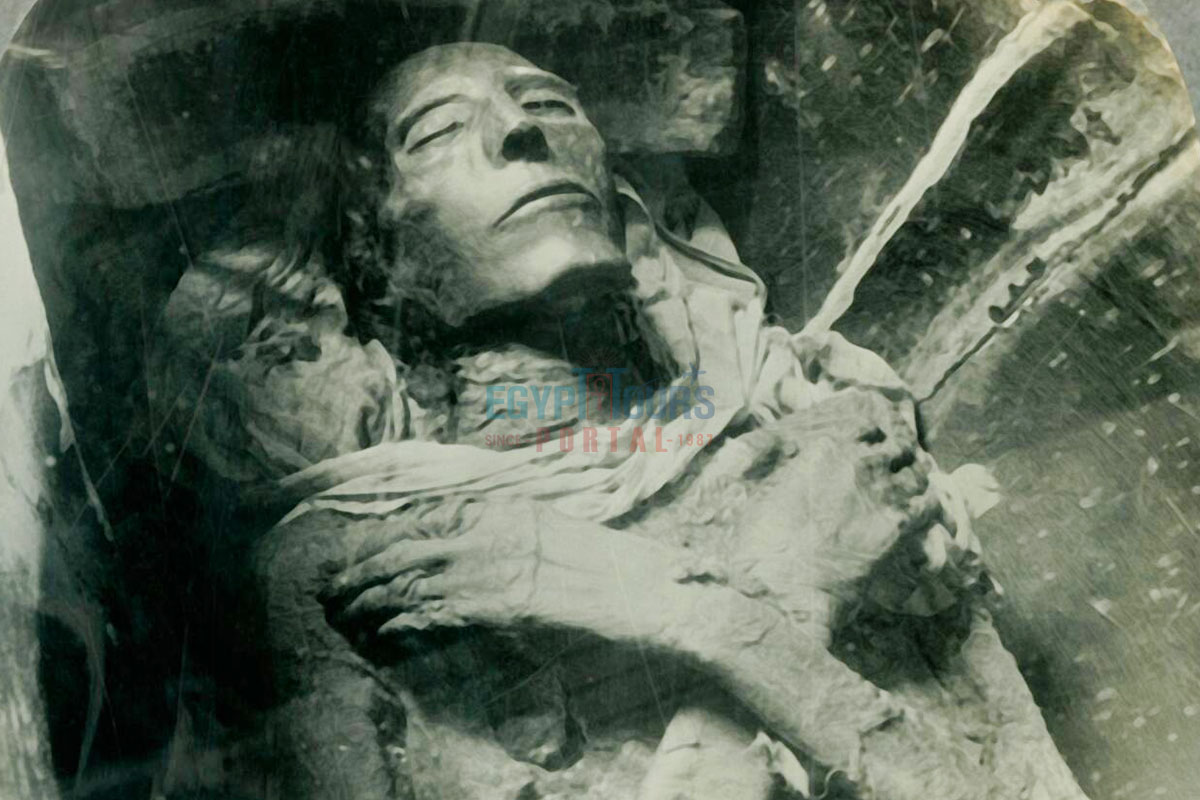
Seti I's remarkably preserved mummy offers clues about his untimely demise before the age of forty-four, setting him apart from longer-lived pharaohs like Horemheb, Ramesses I, and Ramesses II. Despite the mystery surrounding his early death, examinations show no signs of violence on his remains, although tomb robbers had severed his head posthumously. Priests carefully reattached it. Some theories propose a lingering illness, possibly linked to his heart, as the cause. Intriguingly, his heart was placed on the right side during mummification, a departure from the customary left, sparking debates about its significance for the afterlife.
At a height of around 5 feet 7 inches, details about Seti I's physical stature add depth to our understanding. Moreover, X-ray studies in 1980 suggested similarities between Seti I's features and those of the Western World or North Mediterranean populations. In April 2021, Seti I’s mummy was part of the Pharaohs' Golden Parade, moving from the Museum of Egyptian Antiquities to the National Museum of Egyptian Civilization alongside four queens and 17 other kings, thus marking a historic relocation.

The cartouche of Seti I refers to the oval-shaped emblem that contains his name written in hieroglyphs. Ancient Egyptian pharaohs used cartouches to emphasize their royal names, often depicting them as powerful rulers. The Cartouche of Seti I, the lord of the two lands, sometimes features images and engravings of many gods & goddesses like Osiris, Hathor, Ptah & many mummies to signify his immense power and divinity.
Archaeological findings and historical records provide valuable insights into ancient Egypt, but the connection between Seti I and Moses remains uncertain and subject to interpretation.
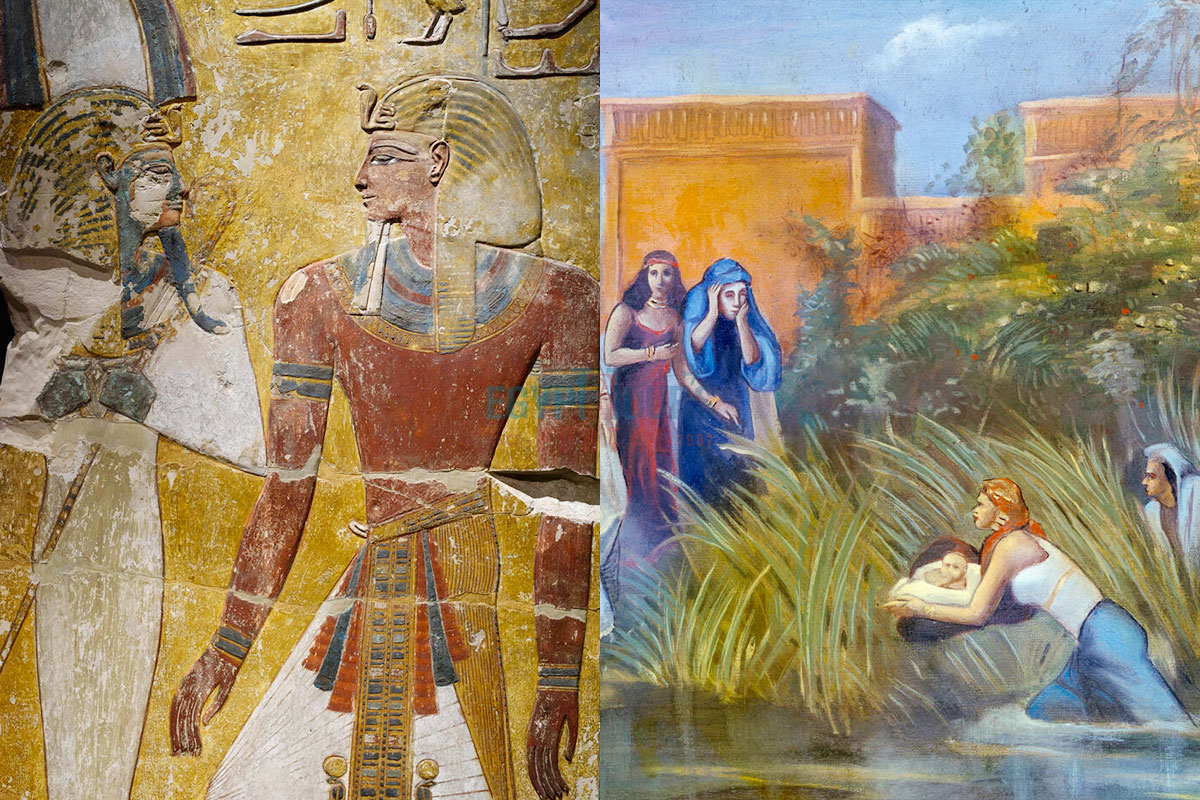
The connection between Seti I and Moses is often linked through historical and religious interpretations, particularly in the context of the biblical story of Exodus. According to some historical theories, Seti I or his son, Ramesses II (also known as Ramesses the Great), have been suggested as potential candidates for the Pharaoh mentioned in the biblical story of Exodus, who clashed with Moses.
However, there's no direct, conclusive evidence linking Seti I specifically to Moses or the events described in the biblical narrative. The identification of the Pharaoh of the Exodus remains a subject of debate among historians, archaeologists, and scholars. The biblical account provides a narrative that is open to various interpretations, and the lack of concrete evidence makes it challenging to pinpoint specific historical figures with certainty.
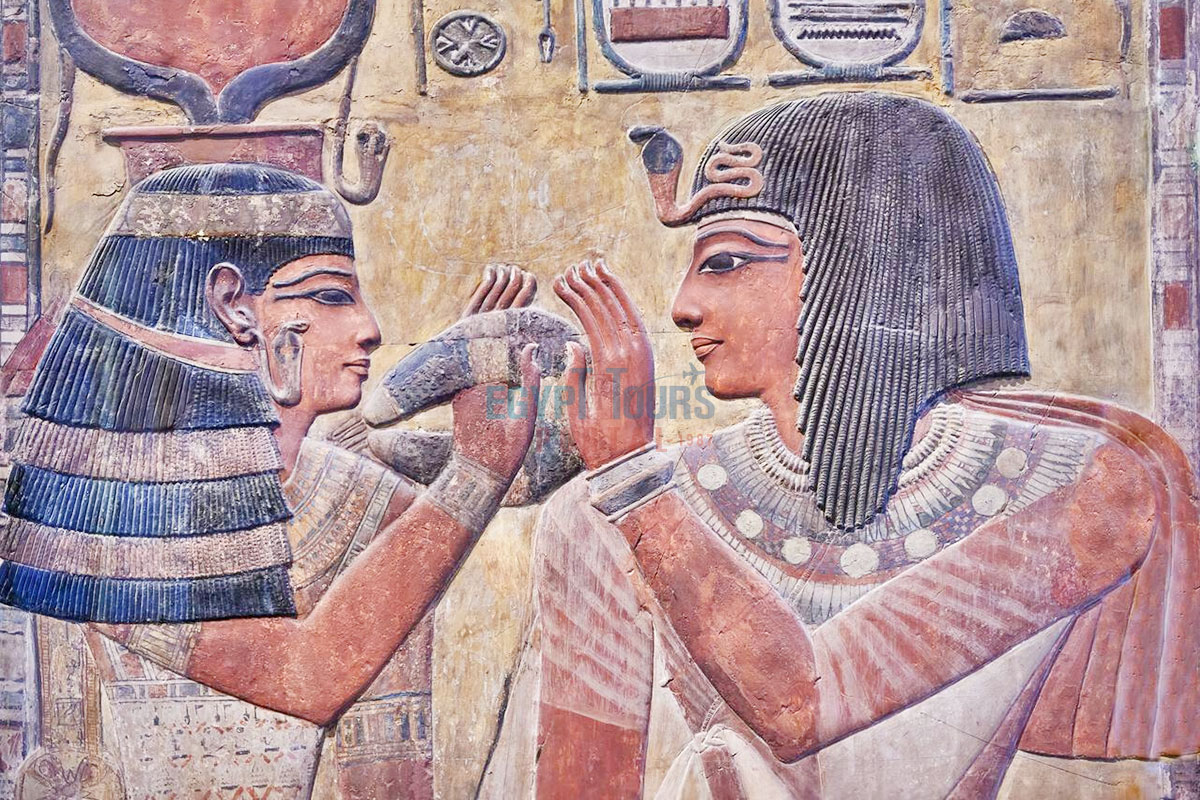
There are a lot of incredible characters in the history of ancient Egypt that created the unforgettable legacy of the great civilization. Book now the best Egypt Guided Tours with us and enjoy the miracles of Egypt.
Private 4 Days Cairo Tour Packages for Australian Travelers 4 days Cairo Egypt Tour ...
Tour Location: Cairo – Giza...
5 Days Cairo and Alexandria Tour Package For Australian Travelers 5 days Cairo and A...
Tour Location: Cairo/Giza/Alexandria...
6 Days Cairo, Luxor & Aswan Tour Package For Australian Travelers 6 days Cairo, ...
Tour Location: Cairo/Giza/Aswan/Luxor...
Amazing 7 Days Cairo and Hurghada Holiday for Australian Travelers 7 Days Cairo &...
Tour Location: Cairo – Giza – Hurgh...
Seti I died from uncertain reasons at the age of 44 years, which has speculated a number of theories due to illness or old age.
Seti I was highly famous due to his many military campaigns, his construction projects like the construction of the temple complex at Abydos, which holds the king’s list, and his efforts to restore Egypt after the upheaval of Akhenaten.
Seti I was born in the city of Avaris around 1323 BC.
Seti I ruled for about 11 years, which lasted from around 1294 BC to 1279 BC.
Seti I was important for his successful military campaigns and his efforts to restore stability and traditional religious practices in Egypt after a period of disruption.
Seti I ruled in the 19th dynasty of ancient Egypt during the reign of 1290–1279 BC.
Pharaoh Seti I’s mummy was discovered in his own tomb in the Valley of the Kings in KV17.
Seti I looks like your typical Pharaoh who has regal attire, a headdress “Nemes”, and symbols of authority like the cobra “Uraeus” on his forehead.
Pharaoh Seti I died at the age of 44.
Seti I became the pharaoh through inheritance, as when his father Ramesses I died, he ascended to the throne.
Seti I lived during the 19th dynasty between the years of 1294 BC to 1279 BC.
Seti I had a number of children, Tia, Ramesses II, and Henutmire, with two wives, Tuya and Tanedjemet.
Like any pharaoh of the new kingdom, many rulers faced a number of the usual challenges when it came to controlling their regions and dealing with potential internal dissent.
Seti I is known to have had two wives and one principal wife, “Queen Tuya” but details about additional wives or consorts are less clear.
Seti I’s tomb KV17 in the Valley of the Kings, was constructed during his lifetime, presumably in preparation for his afterlife.
The High Priest of Amun was the main priest which was a significant religious position in ancient Egypt.
Seti I was buried in the Valley of the Kings within his tomb, which is called KV17.
Seti I was a strong and capable ruler who was able to restore stability and traditional practices after the turbulent period of his predecessors, which included Akhenaten.
Seti I’s colossal statue is an epic piece of art with a height of 114.5 cm, width of 37 cm, and depth of 76 cm.
Seti I's sarcophagus is notable for its intricate and detailed inscriptions and artwork depicting religious scenes and the journey to the afterlife. It is decorated on every surface, including the goddess Nut on the interior base, thus showcasing the beliefs and rituals of ancient Egyptian culture.
The entire country of Egypt deserve to be explored with its every heavenly detail but there are places that must be seen before any other such as the breathtaking Hurghada's red sea, The wonders of Cairo the pyramids of Giza, the great sphinx, the Egyptian Museum, Khan El Khalili Bazaar, the wonders of Luxor like Valley of the Kings, Karnak & Hatshepsut temple and the wonders of Aswan such as Abu Simbel temples, Philea temple, Unfinished obelisk and The Wonders of Alexandria like Qaitbat Citadel, Pompey's Pillar and Alexandria Library. Read more about the best places to visit in Egypt.
If you want to apply for a Visa On Arrival that lasts for 30 days then you should be one of the eligible countries, have a valid passport with at least 6 months remaining and pay 25$ USD in cash, as for the E-Visa for 30 day you should have a valid passport for at least 8 months, complete the online application, pay the e-visa fee then print the e-visa to later be presented to the airport border guard. You could also be one of the lucky ones who can obtain a free visa for 90 days. Read more about Egypt travel visa.
Egypt has a variety of delicious cuisines but we recommend “Ful & Ta’meya (Fava Beans and Falafel)”, Mulukhiya, “Koshary”, a traditional Egyptian pasta dish, and Kebab & Kofta, the Egyptian traditional meat dish.
The best time to travel to Egypt is during the winter from September to April as the climate becomes a little tropical accompanied by a magical atmosphere of warm weather with a winter breeze. You will be notified in the week of your trip if the Climate is unsafe and if any changes have been made.
You should pack everything you could ever need in a small bag so you could move easily between your destinations.
We have been creating the finest vacations for more than 20 years around the most majestic destinations in Egypt. Our staff consists of the best operators, guides and drivers who dedicate all of their time & effort to make you have the perfect vacation. All of our tours are customized by Travel, Financial & Time consultants to fit your every possible need during your vacation. It doesn't go without saying that your safety and comfort are our main priority and all of our resources will be directed to provide the finest atmosphere until you return home.
You will feel safe in Egypt as the current atmosphere of the country is quite peaceful after the government took powerful measures like restructuring the entire tourist police to include all the important and tourist attractions in Egypt. Read more about is it safe to travel to Egypt.
Wear whatever feels right and comfortable. It is advised to wear something light and comfortable footwear like a closed-toe shoe to sustain the terrain of Egypt. Put on sun block during your time in Egypt in the summer to protect yourself from the sun.
The best activity is by far boarding a Nile Cruise between Luxor and Aswan or Vise Versa. Witness the beauty of Egypt from a hot balloon or a plane and try all the delicious Egyptian cuisines and drinks plus shopping in old Cairo. Explore the allure and wonders of the red sea in the magical city resorts of Egypt like Hurghada and many more by diving and snorkeling in the marine life or Hurghada. Behold the mesmerizing western desert by a safari trip under the heavenly Egyptian skies.
There are a lot of public holidays in Egypt too many to count either religious or nation, the most important festivals are the holy month of Ramadan which ends with Eid Al Fitr, Christmas and new years eve. Read more about festivals & publich holidays in Egypt.
Egypt is considered to be one of the most liberal Islamic countries but it has become a little bit conservative in the last couple of decades so it is advised to avoid showing your chest, shoulders or legs below the knees.
Arabic is the official language and Most Egyptians, who live in the cities, speak or understand English or at least some English words or phrases. Fewer Egyptians can speak French, Italian, Spanish, and German. Professional tour guides, who work in the tourism sector, are equipped to handle visitors who cannot speak Arabic and they will speak enough English and other languages to fulfill the needs of all our clients.
The fastest way is a car, of course, a taxi. If you are in Cairo ride a white taxi to move faster or you could board the fastest way of transportation in Egypt metro if the roads are in rush hour.
The temperature in Egypt ranges from 37c to 14 c. Summer in Egypt is somehow hot but sometimes it becomes cold at night and winter is cool and mild. The average of low temperatures vary from 9.5 °C in the wintertime to 23 °C in the summertime and the average high temperatures vary from 17 °C in the wintertime to 32 °C in the summertime. The temperature is moderate all along the coasts.
It is the home of everything a traveler might be looking for from amazing historical sites dating to more than 4000 years to enchanting city resorts & beaches. You will live the vacation you deserve as Egypt has everything you could possibly imagine.









